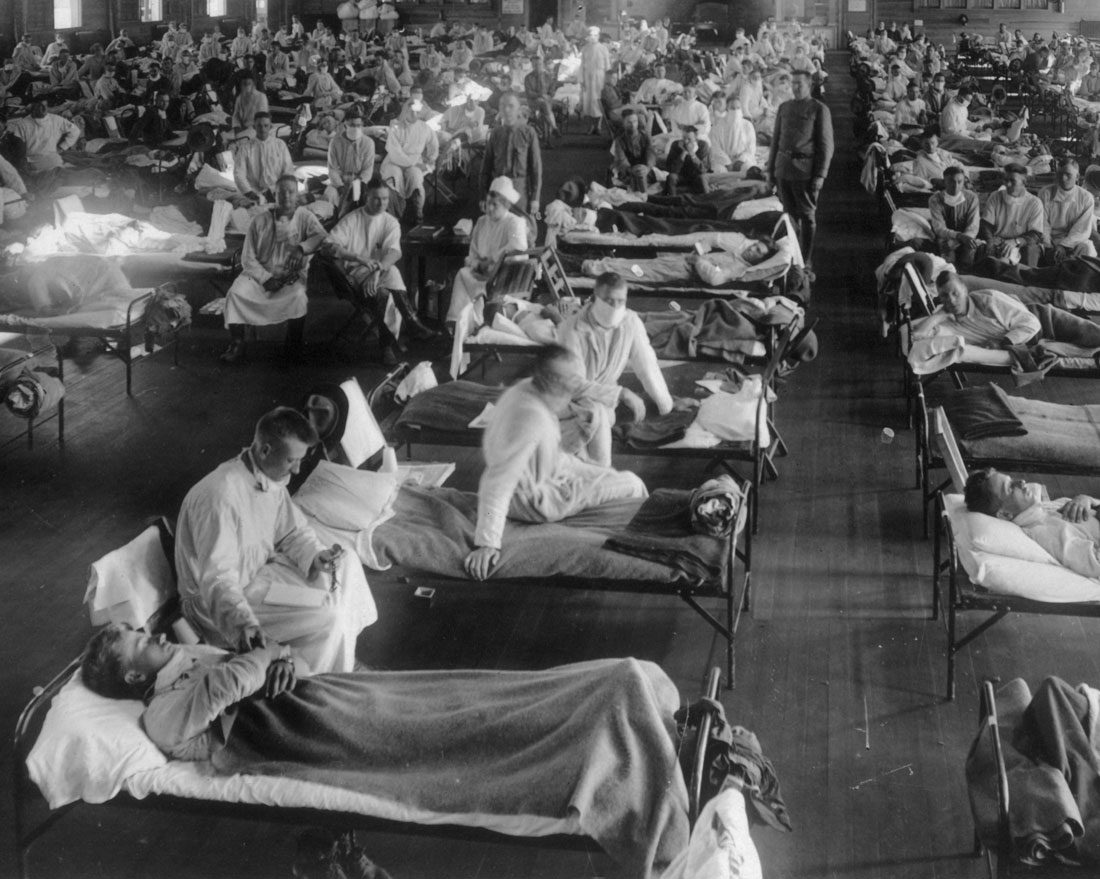A non-physical personality channeled by Jane Roberts in the late 1970s sheds light on viruses and epidemics
The COVID-19 virus is taxing medical systems and killing people with alarming speed worldwide, but the pandemic is as much a theoretical construct as it is a physical event. We don’t know for sure how widespread the virus is compared to other seasonal flu eruptions. Social distancing may slow the contagion, but we don’t know if the strategy will change the number of afflicted people in the long run. At any rate, and for better and for worse, our response has been to grasp the few measures we believe contain the disease: limiting human interaction and deploying vaccines as fast as possible.
The reaction to COVID-19 is based on partial understanding. We know what the virus looks like. We know what it can do to the cellular structure of the human body. We understand that it can spread through water droplets ejected from the nose and mouth. But we don’t know why, for example, some people seem resistant to it while others are not. Some people die from pneumonia triggered by the viral infection, some recover, some have only mild symptoms, and an unknown number may remain asymptomatic for the duration of the pandemic.
There is widespread belief that, because COVID-19 is a “novel” virus, our immune systems are not fully prepared to fend off its attack. While we frantically search for a vaccine, we, the self-proclaimed reigning species on the planet, feel oddly united in our sudden vulnerability.
From the outside looking in
There is information available that sheds some light on the situation, and it comes from a source foreign to scientific inquiry – from outside the framework of day-to-day awareness, in fact. This makes the material somewhat heretical. The material was channeled by the intuitive writer Jane Roberts who, over the course of a decade beginning in 1970, entered a trance state to dictate a number of books authored by an entity named “Seth”. A non-physical personality no longer focused in space-time, Seth lived many lives on earth, one of them self-described as a “politically minded, crooked old Pope” in 300 AD. What the long gone pope says about viruses is clear and direct:
“The viruses in the body have a social, cooperative existence. Their effects become deadly only under certain conditions. The viruses must be triggered into destructive activity, and this happens only at a certain point, when the individual involved is actively seeking either death or a crisis situation biologically.” [1]
Statements like these are challenging for those of us who seek comfort in prevailing beliefs about life, death and victimhood. They nevertheless have a certain quality that may ring true to the open-minded reader; we want to hear more. Obligingly, Seth goes on to list various characteristics of viruses that escape scientific scrutiny. For example, viruses:
- are social,
- react quickly and knowingly to stimuli,
- are responsive to emotional states,
- can revive after centuries of inactivity,
- have extensive memory patterns, and
- can multiply by the tens of thousands within seconds. [2]
We are told that legions of viruses dwell within each of us, and that those viruses have a symbiotic, responsive relationship to our bodies. Viruses are in fact an essential element of biology and play a key role in maintaining overall health. We are unaware of them until they manifest destructive behavior.
We also learn that when people are under great stress and highly alarmed, their bodies can eject harmful viruses into the environment as a means of defense, much as a skunk throws off spray from its scent glands. A sort of “biological aggression”, such responses will occur at times of deep social crisis such as wartime and rampant injustice. At a more immediate level, ejecting viruses is also a way of ridding the body of unwanted stress. [3]
Seth also had this to say about epidemics:
“To a certain extent, epidemics are the result of a mass suicide phenomenon on the parts of those involved. Biological, sociological, or even economic factors may be involved, in that for a variety of reasons, and at different levels, whole groups of individuals want to die at any given time – but in such a way that their individual deaths amount to a mass statement.” [4]
These, of course, would be meta-mass statements, deeply psychological – “spiritual” even – and of a different order than the online petitions and street protests commonly used to provoke government action.
Through selfish neglect, humans have a way of allowing wretched conditions to take hold in the social order: extreme poverty and inequality, senseless warfare, indifferent and flagrant abuse of the natural world. The conditions are eventually “normalized”, but some part of the human psyche refuses to accept them, and sooner or later the psyche responds, erupting en masse into the social environment in a most direct and dramatic way. Society as a whole is shocked into recognition. Yet these are not straightforward events, where everyone in the path of destruction gets mowed down. Seth cites historical events to illustrate:
“Even in the days of the great plagues in England there were those smitten who did not die, and there were those untouched by the disease who dealt with the sick and dying. Those survivors, who were actively involved, saw themselves in a completely different light than those who succumbed however: they were those, untouched by despair, who saw themselves as effective rather than ineffective. Often they roused themselves from lives of previously unheroic situations, and then performed with great bravery.” [5]
Moral, psychological and social triggers
The way Seth describes viral behavior and pandemic events suggests that we are not passive victims in the path of a microscopic predator. There are far more interactive, subjective and personal dynamics at play. Some may find this far-fetched or unbelievable. It is certainly “unscientific” because the source of the information cannot be verified and the statements cannot be proven.
Nevertheless, there are interesting correlations.
Who remembers having the flu as a child, staying at home in bed (away from the stress of school), and being cared for by their mother, who did not get sick? Why did she not get sick?
There is inconclusive evidence regarding the national origin of the 1918 “Spanish flu” pandemic, but there is no disputing the fact that it erupted in military bases in various locations during the later stages of World War I. In 2000, one team of researchers found evidence of an acute respiratory illness at a base in Etaples, France, in the winter of 1915-16.
Noted virologist John Oxford, a member of the research team, observed that the Etaples base – one of the largest ever built and equipped with 22 hospitals – housed a minimum of 100,000 soldiers on any given day, with over a million men passing through over time. Oxford described the camp as the “perfect breeding-ground for influenza viruses, because so many young men of different nationalities were mixing under fairly strenuous circumstances.” [6] “Fairly strenuous circumstances” is surely an understatement.
Later, in a book review, Oxford alluded to the horrors of war. “I believe,” he wrote, “that from the gas-ridden, overcrowded trenches and nearby hospitals of already ruined Europe, filled with enough pigs, chickens and ducks to feed 2 million troops each day, arose a 10,000-nucleotide beast surrounded by a fragile lipid sphere. It seeded itself around the world while its biological clock ticked to ring at midnight on 11 November 1918, when it exploded worldwide.” [7] The used and abused troops were coming home and spreading some very bad news.
In contrast, one of the more plausible theories on the origin of COVID-19 suggests it emerged in a wet market in Wuhan, China. Wet markets offer fresh vegetables, fruits and meats, much like farm markets in other parts of the world. But in China, live and sometimes exotic animals (alligators, peacocks, snakes, bears, for example) are brought to these markets, kept in cages, and slaughtered just prior to being sold. According to Christopher St. Cavish of the Los Angeles Times, the buyers subscribe to a traditional Chinese belief that eating certain wild animal parts confers wealth and status while enhancing health and vitality. However, sale of these meats is poorly regulated, so sanitary conditions can be correspondingly slack. [8]
The animals face brutal conditions, no better no worse perhaps than the general conditions we routinely impose on the natural world, and sometimes on one another. Because the caged animals at the Wuhan wet market doubtlessly felt unbearably stressed, it is not unreasonable to conclude that they retaliated the only way they could: with a biological weapon. Time will tell just how effective that weapon will be.
Will we be shocked into recognition? That might be the best outcome.
—
Photo: Soldiers ill with Spanish flu at a hospital ward at Camp Funston, near Fort Riley, Kansas.
References
[1] The Individual and the Nature of Mass Events, p 184, Jane Roberts, 1981, Amber-Allen Publishing
[2] Ibid, p 185
[3] Dreams, Evolution and Value Fulfillment, p 264, by Jane Roberts, 1986, Amber-Allen Publishing
[4] The Individual and the Nature of Mass Events, p 19, Jane Roberts, 1981, Amber-Allen Publishing
[5] Ibid, p 21
[6] Flu epidemic traced to Great War transit camp, Steve Connor, The Independent, January 8, 2000 https://bit.ly/39CuVdF
[7] Nature’s biological weapon The 1918 flu pandemic killed 50 million people — and it could happen again. Nature, Vol 429, May 27, 2004, www.nature.com/articles/429345a.pdf
[8] No, China’s fresh food markets did not cause coronavirus
www.latimes.com/food/story/2020-03-11/coronavirus-china-wet-markets

